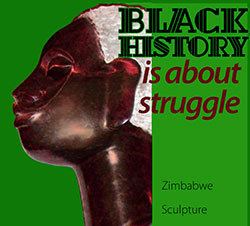

The 400-year existence of Africans and their descendants in the U.S. can be summed up with a word like “exclusion.” Also never-ending racial hatred and violence toward Black people. This includes 85 years of Jim Crow/apartheid legal segregation and discrimination from the end of Reconstruction in 1877 to the beginning of the Civil Rights Movement in the 1950s.
Traveling while Black throughout the U.S. for work or leisure was always challenging for African Americans. Beginning in colonial times, controls and restrictions were placed on their movements and activities.
After the Depression of the 1930s ended and more African Americans could afford automobiles, they chose the freedom of driving as opposed to riding segregated buses and trains and enduring insults, humiliation and hostility. However, driving while Black was often fraught with not only rejection, but also harassment, inconveniences and hardships on and off the road, as well as age-old racial profiling by the police.
On the road, Black travelers had difficulty obtaining gas and getting cars repaired. They faced denial of restroom use in rest stops like Howard Johnson. Families had to bring a pail and toilet paper with them and include a bucket of extra gasoline in the trunk. They also had to prepare and pack meals for trips because they were refused entry and/or service in restaurants.
Finding overnight accommodations was daunting. Blacks often had to resort to sleeping in their cars, on the ground or in a barn. Navigating these alternatives was often risky and dangerous. Additionally, thousands of towns across the country were “sundown towns” — off limits to African Americans after sunset and violently enforced.
Out of necessity, Victor Hugo Green, a resident of Harlem, created a travel guide for Black travelers. Green was a Black World War I veteran and postal letter carrier. He edited and published the guide annually or seasonally from 1936 to 1966. It provided a directory of safe, hospitable and relatively friendly hotels, motels, rooming houses, garages and restaurants in New York state. Soon he expanded listings to other parts of the country. Green also became a travel agent and made reservations for subscribers. He and his agents in the field would personally travel across the country to check on the accuracy and condition of places.
Originally named “The Negro Motorist Green Book,” it contained thousands of listings arranged alphabetically by state and city within that state. It became known as “the bible of Black travel during Jim Crow,” and was distributed by mail order and Black-owned businesses, expanding from 10 pages to more than 80. At least 15,000 copies were sold yearly.
The foreword of the 1956 edition stated: “The White traveler has had no difficulty in getting accommodations, but with the Negro it has been different. He, before the advent of a Negro travel guide, had to depend on word of mouth, and many times accommodations were not available.”
One of the last editions of the book included “Your Rights, Briefly Speaking,” featuring state statutes related to discrimination in travel accommodations. “The Negro is only demanding what everyone else wants. What is guaranteed all citizens by the Constitution of the U.S.”
As recreational travel by African Americans increased, a vacation section was added in 1947, which listed resorts, theaters, pools, beaches, golf courses and guest houses that were safe havens where Black people could relax and freely enjoy vacations or business trips. Later, hotels and guest houses in Alaska, the Caribbean, Mexico and Montreal, Canada, were included.
Civil Rights activism led to the passage of the 1964 Civil Rights Act that outlawed racial discrimination in public places. The year before, the “Green Book” acknowledged that activism had increased accessible accommodations. The title of the last edition was changed to “Traveler’s Green Book: International Edition.”
A recent Hollywood film entitled “Green Book” has a storyline about a real-life Black pianist, Dr. Don Shirley, traveling south from New York City in 1962. It informs or reminds viewers of the existence of Victor Green’s “Green Book” for Black travelers. The film just won Academy Awards for Best Supporting Actor, Best Original Screenplay and Best Picture.
As part of Workers World newspaper’s coverage marking the 50th anniversary of the liberation of…
From the PFLP Central Media Office The following statement from the Popular Front for the…
Newark, New Jersey Over 250 people, representing over 250 New Jersey endorsing community groups, attended…
Special to Workers World The following is a press release issued on April 24, 2025,…
dear Larry Krasner, we heard you sued Elon Musk over his corrupt million election giveaways…
Unions join forces against harassment and deportation of members When 200 immigrant workers – from…